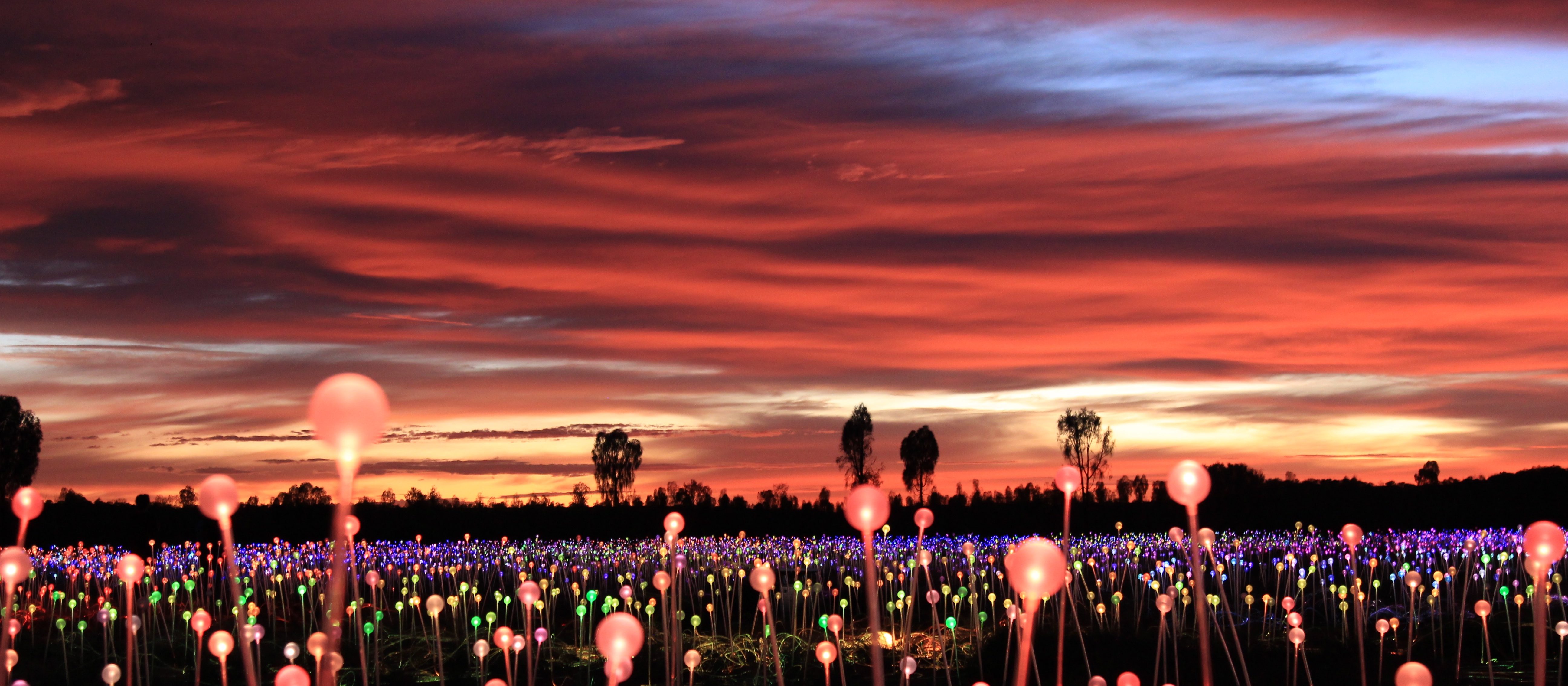Published on: August 16th, 2019
Last modified: July 28th, 2023
British artist Bruce Munro is well-known for his immersive, large-scale light-based installations. From the Islamic Arts Festival in Sharjah to Jeju Light Festival in South Korea, Bruce's work has made an impact across the globe.
Perhaps his most famous work is the Field of Light, a light installation on an epic scale. Iterations of this installation have made their way from the US to Denmark, and the most recent edition landed in Australia's Northern Territory in 2016.
With the Uluru installation of Field of Light set to close in December 2020, we caught up with Bruce to talk about everything from how he finds his inspiration to his favourite travel destinations.
Light installations are coming to the forefront of modern art. How did you begin to work with light as your main medium, and what was it that initially drew you to it?
I started working with light in my mid-20s, when I was living and working in Sydney. After I finished my Fine Arts degree in Bristol in 1982, I really didn’t believe I’d be able to turn the creative process of painting that I’d come to love into a full-time career. So, I decided to move to Sydney and just live life for a while.
I hadn’t given up on my dream, and I used to fill sketchbooks with page upon page of different ideas. It was only when an executive from Saatchi & Saatchi told me that I was somewhat of a “butterfly” that I realised I probably needed to settle on one medium. One day, as I was walking down the street a light in a shop window caught my eye, and after that I remember buying some light and setting up some very small light installations across the city.
When I first began working with light in my mid-20s, I didn’t see it as creative work – I was really just trying to make the most of life. It wasn’t until my father passed away twenty years later that I really started taking the creative work seriously, and I feel that choosing light as my main medium was something that came about very naturally. I took a massive risk when planning Field of Light – I bought a run-down house with a huge mortgage just because it came with a field that I could experiment with light in. Hopefully it’s a risk that’s paid off!
Your work is often based around dramatic landscapes. Can you tell us a bit about the relationship between your work and the natural world?
I believe everything comes from nature – no part of our world works in isolation from any other part. I also believe that respecting the natural environment is paramount. At Uluru, the Field of Light is completely solar powered, so it’s a very gentle installation. At the moment, there’s a team on the ground working to refurbish some of the fibre optics and make sure that the work is constantly in harmony with nature. In fact, the Field of Light installation in Uluru creates the same amount of light pollution as just powering two domestic houses for 4 hours a day.
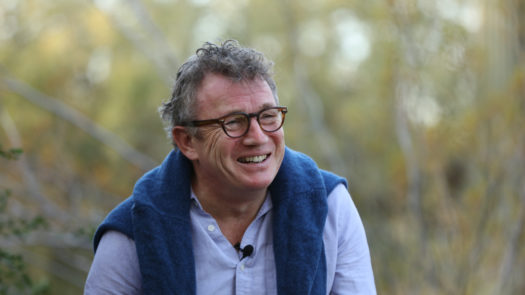
You’ve displayed installations and exhibitions across the world. Are there any destinations that stand out in your mind as particularly special, or any anecdotes from your travels you’d like to share?
I love travelling and I believe art is a great way of connecting people universally, across cultures and languages. I remember one occasion from my travels as a teenager, when I was hitch-hiking in France. I ended up accepting a lift with a car, and I thought to myself “you can either think you’re going to get murdered or accept that 99% of people are going to be good, honest people.” I’ve never really had a bad moment whilst travelling, and I really think that’s down to the way in which I choose to perceive the world and the people in it.
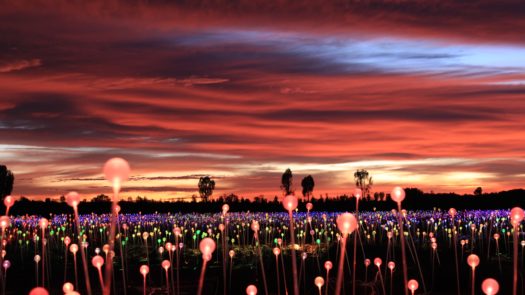
Is there anywhere in the world you’d really like to exhibit that you haven’t had the opportunity to do before?
For me, the projects really come first. I often get approached by people from across the globe who ask me to come and set up installations in their communities, and I’ll go pretty much anywhere if it’s a project I believe in. For example, my recent Sensorio installation in California was inspired by a couple who visited Uluru and asked me to set up Field of Light in their hometown.
I do particularly like working on commissions that take me to more remote places. However, I recently went on a trip to central Berlin where I was asked to set up installations in old buildings and on derelict land, which I loved too. I’m also heading out to Victoria in Australia later this year to scope out locations for my next installation. I love learning about new places and cultures, and I’m currently focusing on pieces about how nature and places have developed through the ages.
I understand you moved to Sydney and spent a few years travelling through Australia after studying your degree in Fine Arts. What was it about Uluru in particular that made you want to create the Field of Light installation there?
Uluru was really the starting point for the Field of Light. The first time I visited, I was camping with my now wife Serena and thought it was an extraordinary place. I always thought deserts were barren, lifeless places but being in Uluru gave me the complete opposite feeling. I felt totally alive the whole time I was there, and so I started wondering how I could communicate this feeling through my art.
At the time, I was travelling through Australia in a camper van, and so I had lots of time to think through ideas. The original iteration of Field of Light was slightly different than what it’s ended up being. I owned an industrial lighting business, so I was originally thinking about putting together a sort of dance of light. I then started playing around with fibre optics, and became increasingly drawn to them – hence why the installation of today is made up of more than 50,000 fibre optic flower-like stems.
Was Field of Light always intended to be temporary, and do you feel that it’s made the impact you wanted it to make?
I believe work should only exist for as long as there is a want for it. Uluru in particular is a gentle piece of work that creates opportunities for the people who visit to be both introspective and reflective. Field of Light is truly an expression of the landscape which houses it, and I think this is a very important story for our time. We’re living in a time of increased serious conflict, and I really believe work like Field of Light is able to bring people together when we need it the most. Ultimately, I want art to be used as a medium that unites people in a positive way, and I really want the concept of global unity to be the key message behind my work.
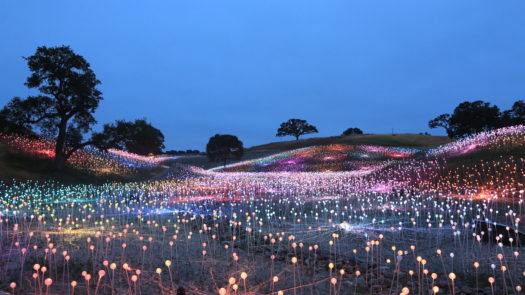
Your new exhibition ‘Bruce Munro: Tropical Light’ is opening in Darwin later this year. Can you tell us a bit more about it?
I first visited Darwin in 1992 with Serena, and we ended up camping there during the hot season. It wasn’t the best time to camp, but I fell in love with the city! I recently returned and spent 4 or 5 days just walking through the city. The installation itself actually runs across 8 or 9 different locations within Darwin, and it’s more of a large-scale, city-based installation compared to my previous work. The curator of the installation is actually also involving local creatives – poets, musicians etc. – so that it’s a proper city-based endeavour. I named it ‘Tropical Light,’ because it’ll be light-based (of course!) and running during Darwin’s tropical hot season. It opens on November 1st 2019.
For more information about Bruce’s life and work, visit Brucemunro.co.uk.
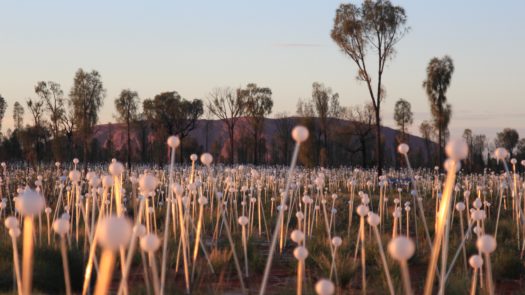
Visit Uluru before Dec 2020 for a last look at the Field of Light
